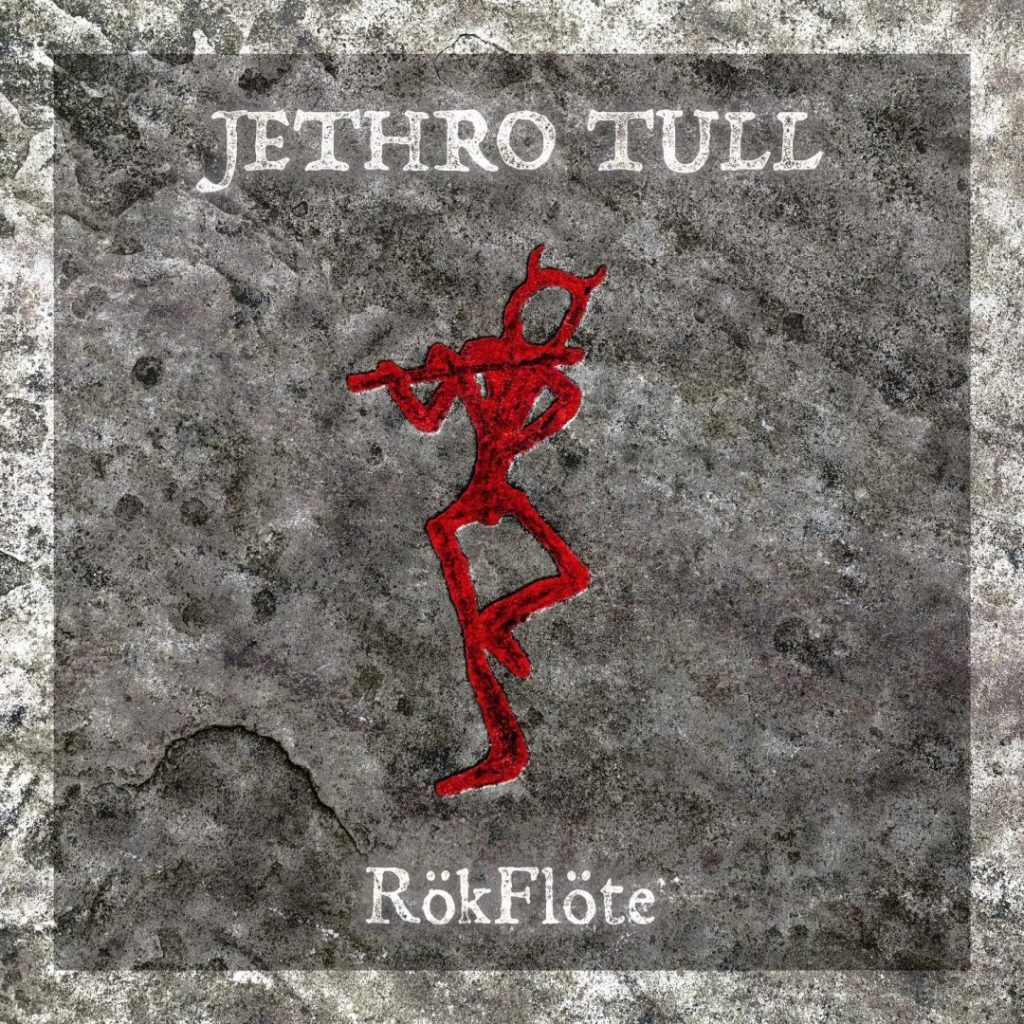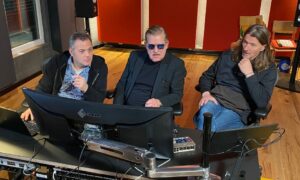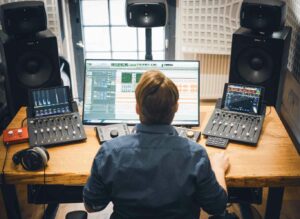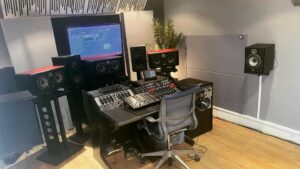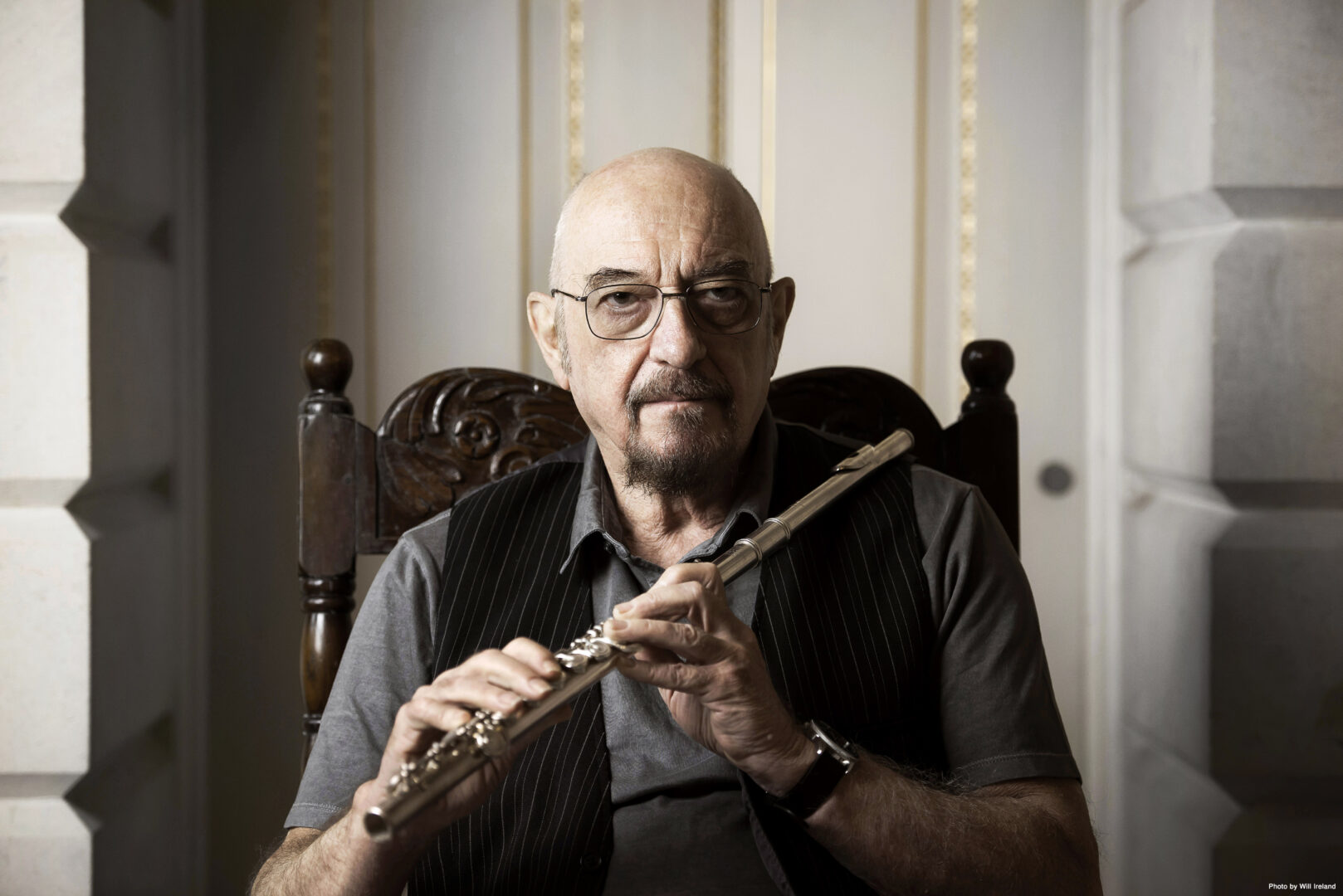
Jethro Tull, a pioneering progressive rock band whose history spans decades and changing line-ups, has always been characterised by a unique core essence. In an interview with Christoph Diekmann, frontman Ian Anderson and sound engineer Bruce Soord (The Pineapple Thief) talked about the band’s development, the album RökFlöte and the influence of AI on the music production of the future.
Let’s talk about Jethro Tull first. Jethro Tull is one of the pioneering progressive rock bands and has survived to this day despite changing line-ups. Can you describe the development of the band over the years?
IAN: It’s interesting that you mention the evolution of Jethro Tull through different line-ups. Although many band members have come and gone over the years, the core essence of Jethro Tull has remained the same since its inception. It is something unique when musicians come together for a few months or years and bring a special quality to the music. Band culture evolves and changes over time, but there is an underlying essence that goes back to the beginning.
I started writing songs for our second album in the summer of 1968, and that was the time when we started to develop a more progressive style of music, different from the blues influences that had initially characterised our sound. We have certainly grown as musicians and perfected our craft. Some of the older band members may have difficulty playing our newer songs, but the current members need to be versatile and appreciate the wide musical range that spans from 1968 to 2023.
Would you say that change was a constant theme on your journey?
IAN: Change is the common denominator, but there are also moments of stability. A long-standing line-up can bring stability to the band’s culture and sound. At the moment we are not seeing any significant changes and although this may change in the future, it is important to adapt and evolve. As I’m not getting any younger and a visit to the supermarket is like a monumental expedition, I have to play for as long as I can.

Bruce, you have a lot of experience as a sound engineer, especially in the rock genre. How did the collaboration with Jethro Tull, led by Ian, for the “RökFlöte” project come about?
BRUCE: The collaboration with Jethro Tull and Ian for the “RökFlöte” project started because I was one of the few studios that was suitable for Dolby Atmos specifically in this genre of music. I also had the necessary surround sound equipment. Ian’s manager James contacted me to explore the potential of Dolby Atmos. Ian came to my studio, which is basically a high-end garden shed that I carefully prepared for the Atmos mix. That was the beginning of the project, and it was a very enriching experience.
Ian, you called the project “RökFlöte”. How should we pronounce it? Is it similar to the German pronunciation “Rock Flöte”? How do you pronounce it?
IAN: We are aiming for a pronunciation that is similar to the German “Rök”, but we know that this can be difficult, especially for some Americans. To make it easier for them, we often pronounce it as “Rock Flute”. However, the term “Rök” has a historical and linguistic meaning in various European languages. In Old Icelandic, “Rök” means fate, and it is associated with words such as “Ragnarök”, which means the end of days in Norse mythology.
It’s definitely an unusual name, and the fact that it comes from a British band gives it an interesting twist. As this is your 23rd studio album and you are currently on tour, can you tell us something about the character of this tour and what it has to do with the album “RökFlöte”?
IAN: In recent years, touring has mainly been about maintaining my physical health and staying in shape. It’s important for me to be on stage even in difficult weather conditions. Medical consultations have shown that it is beneficial for me to continue performing on stage as long as I have no other health problems. There is something exciting, romantic and absurd about travelling to new lands in search of fame, fortune and adventure, and I still like it.
But I’m not a fan of long tours that last six weeks or two months. I prefer short tours that usually only last a few days. The idea of being on tour for a long time, staying in hotels and constantly travelling no longer appeals to me. It’s fun for a few days, but not for several weeks.
As far as the setlist is concerned, we try to cover a broad spectrum at our concerts. We play songs from the last album, some from the new album and something from each of the seven decades Jethro Tull has been around. Our audience comes to hear classic songs that have characterised different phases of our career. We have a large repertoire from which we can put together a varied setlist for every tour.
Bruce, if I’m not mistaken, you started working on “RökFlöte” after the stereo mix was finished. Did the live set-up and the spatial dimension of a live performance influence your approach to mixing this album?
BRUCE: Yes, that’s right. When I started with “RökFlöte”, the stereo mix was already finished. A key element of this album is that it shows the band live in the studio. This differs from modern recording projects, where many musicians put layers on top of each other and edit the tracks to perfection. “RökFlöte” preserves the raw and authentic essence of a live performance. The instrumentation is relatively simple and consists of guitars, keyboards, vocals, flutes and drums.
Given this live-like approach to recording, mixing for Dolby Atmos provided a unique opportunity to add spatial dimensions to enhance the sound. For example, I duplicated tracks for the guitars, applied various effects and placed alternative sounds in the room to expand the acoustic landscape.
IAN: It’s important to note that I suggested from the beginning that Bruce should also do an alternate stereo mix. Having both a Dolby Atmos mix and a stereo mix gives the listener more options and a slightly different perspective on the music. The opportunity to experience the music in different ways is very important for our audience.
Ian, what was your experience of hearing the immersive Dolby Atmos mix of “RökFlöte” for the first time, considering you’re coming from the mono era and making the transition to this 360-degree audio format?
IAN: I had the opportunity to hear the immersive mix in Bruce’s studio as I don’t have the equipment at home to use such advanced audio techniques. I prefer to listen to music through high-quality headphones that offer a clear stereo sound experience that is free from the effects of room acoustics. I think that this gives you a pure listening experience.
Although I have other listening options, I occasionally use Apple headphones with algorithms that simulate a kind of 360-degree sound. These headphones give a flavour of the spatial quality, but the additional technology can affect the sound quality of the music. Bluetooth in particular introduces tiny latencies, phase cancellations and other sound artefacts. Ideally, I would keep the stereo sound experience with high-quality headphones, but I appreciate the immersive experience of multi-channel audio. My songwriting is not significantly influenced by this, however.
As our readers often have at least ten speakers in their rooms and we operate in the home cinema market, we specialise in the audio quality of Blu-ray and streaming. What do you think of the possibility of placing instruments in different places in the room? Does that inspire you creatively?
IAN: When I write music, I concentrate on how it sounds when I’m not in the rehearsal room. As soon as I immerse myself in the live performance with the other musicians, I experience a 360-degree sound. But that has no direct influence on my songwriting process. Songwriting is an abstract endeavour that usually takes place at my desk in the office, and the creative process is not influenced by the technology used for playback.
My goal as a musician is to make sure the music sounds great no matter where it’s played, be it with high-quality headphones, a 360-degree immersive audio setup or any other medium. As for Bruce, the immersive format could affect his songwriting process in other ways.
BRUCE: Actually, the creative songwriting process is not directly influenced by the multi-channel format. When composing, the focus is entirely on the music itself. The role of multi-channel mixing comes later in the production process, when we think about how we can best utilise technology to enhance the listening experience.
Can you tell us more about the quad mix of “Aqualung” and other albums that have received a multi-channel mix in the past?
IAN: In the past we’ve done Quadrophonic mixes for albums like “Aqualung”. We even had a mobile recording studio that was specially designed for quadrophonic recordings. But the technology back then was not as advanced as it is today. To play quadrophonic music, a vinyl encoding process was used for the rear channels with limited bandwidth and quality. Therefore, the quadrophonic format was not ideal for reproducing the full depth and subtleties of our music.
BRUCE: The technology at the time had its limitations, but the idea of quadraphony was fascinating. The opportunity to create a more immersive experience was exciting. Today, with the possibilities of Dolby Atmos and advanced spatial audio technologies, we have much more freedom and flexibility to create a truly immersive listening experience.
What does the future look like? Do you see the possibility of producing more Jethro Tull albums with multi-channel and Dolby Atmos mixes?
IAN: Over the years we have worked with various remix engineers to explore multi-channel formats. Steven Wilson and Jakko Jakszyk have helped us with their expertise to improve our classic albums. Bruce is the youngest of these talented sound engineers. It fascinated me that these engineers, Bruce included, were not necessarily familiar with the music of Jethro Tull when we started work. They approached the project as a professional task without relying on prior knowledge or personal prejudices.
BRUCE: That’s right. When I started working on “RökFlöte”, Ian and Jethro Tull were recommended to me by experts. I was introduced to the band through this project and it was an enriching experience. I also had the opportunity to work on several remixes of live material in surround sound formats. It is important to give the audience the choice of how they want to experience the music, be it in stereo or in immersive formats.
IAN: In terms of future multichannel and Dolby Atmos projects, there is a possibility that we may explore more of our catalogue, but that depends on a number of factors. The aim is to continue to offer listeners a variety of ways to enjoy our music.
If we look to the future, technologies such as artificial intelligence are developing rapidly and offer new possibilities for music production. How do you see the role of AI in music production and do you have any plans or ideas in this direction?
IAN: Although AI has the potential to improve music production, I believe it should be used with caution. It can help with different aspects of music, but we have to be careful that it doesn’t completely control or define the creative process. Similar to digital recording formats, technology is a tool to enhance the experience, not to dictate it. When AI starts to replace the essence and spirit of human creativity, I have concerns.
BRUCE: I agree with Ian on that. AI should be a helpful tool in the creative process, but it must not get out of hand. It’s important to preserve the integrity and authenticity of the music and not rely too much on AI when it gets in the way of artistic expression.
IAN: Ultimately, the relationship between artists and AI should be characterised by artistic integrity and respect for the creative process. Music should reflect the human spirit and touch the hearts of the listeners. If AI can improve this process without jeopardising the core values of music, it can be a valuable addition.
Thank you for sharing your insights and experiences with us. We greatly appreciate your time.
Note: A detailed interview with Bruce Soord about his work as a sound engineer and musician will follow shortly.

